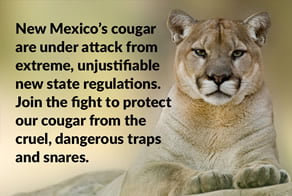Animal Cruelty
Animal Humane New Mexico Position Statement on Trapping
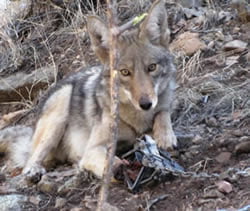
This trapped coyote was discovered by a group of hikers in New Mexico
In February of 2011, a group of hikers discovered this trapped coyote. It suffered acute lacerations and a fractured bone. Apparently, the trapper had forgotten to check his trap.
Animal Humane | New Mexico joins the American Veterinary Association, Animal Protection of New Mexico, the American Animal Hospital Association and the National Animal Control Association in declaring the use of snares, leg hold and conibear traps to be inhumane to animals.
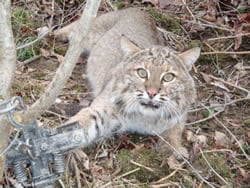
Bobcat caught in steel-jaw leg-hold trap
Animal Humane | New Mexico further opposes their use on public lands. The use of these traps is inhumane and indiscriminate, trapping wild animals, protected species and domestic pets. Trapped animals are subject to extreme suffering, panic and agony often for hours on end. The majority of the animals trapped die a violent death. Trapping on public lands is a public safety issue with hikers and their pets being injured by these hidden hazards.
Animal Humane | New Mexico is against the use of these traps because they are indiscriminate and inhumane and urges the NM Game and Fish Commission to immediately ban their use on public lands.
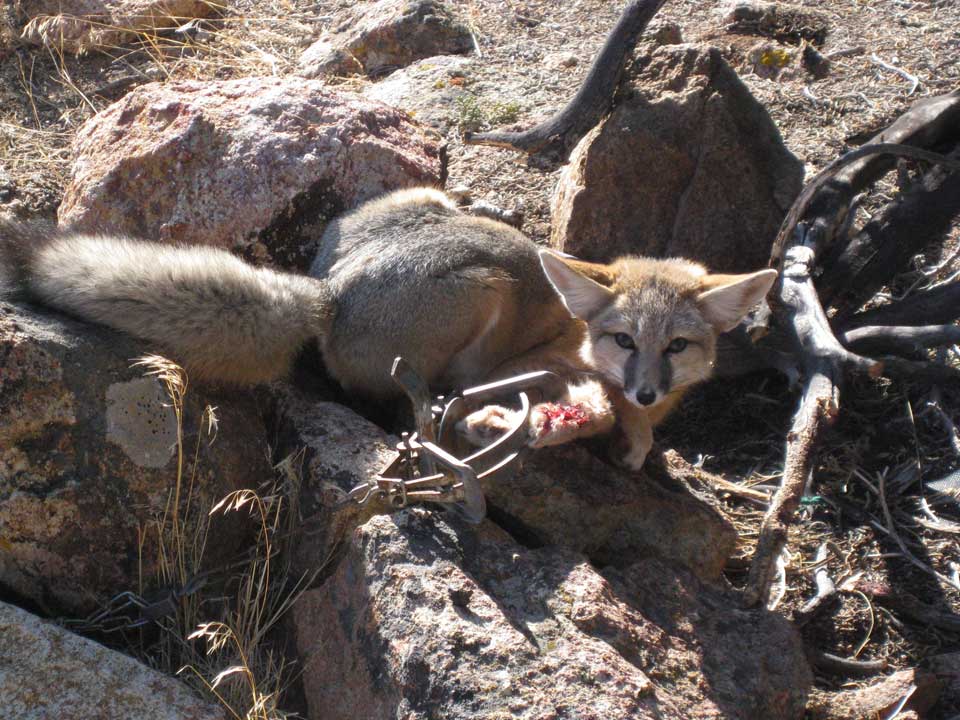
Despite their precariously low numbers, swift foxes are still trapped even as their pelts are practically worthless on global fur markets.
Investigation Inside the World of Fur Trapping
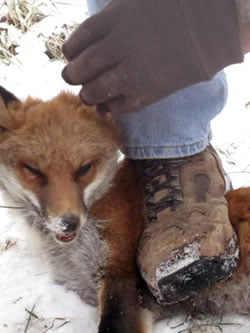 In early 2011 Born Free USA and Respect for Animals conducted a landmark investigation inside the world of fur trapping.
In early 2011 Born Free USA and Respect for Animals conducted a landmark investigation inside the world of fur trapping.
Born Free USA’s investigation documented trappers in New Mexico strangling, drowning and chest stomping animals. Read more
Read “Victims of Vanity”, Born Free USA’s full trapping investigation report [7.2 MB PDF]
Animals suffer pain, trauma, and stress when held by traps. Immobilized animals can experience dehydration, hunger, panic-induced self-mutilation, exposure to weather, and predation.
Injured animals have a reduced ability to hunt, forage for food, and thus their survival is jeopardized.
Kill traps such as conibear traps and neck snares pose an inefficient and brutal death to its victims. Many fail to render the animals unconscious in the recommended time. They can also mis-strike, capturing an unintended body part.
Body gripping traps do not discriminate by design. Any creature with legs that touch the ground can trigger the devices. In addition to traps, legal methods of killing furbearers include dogs, firearms, and bows and arrows.
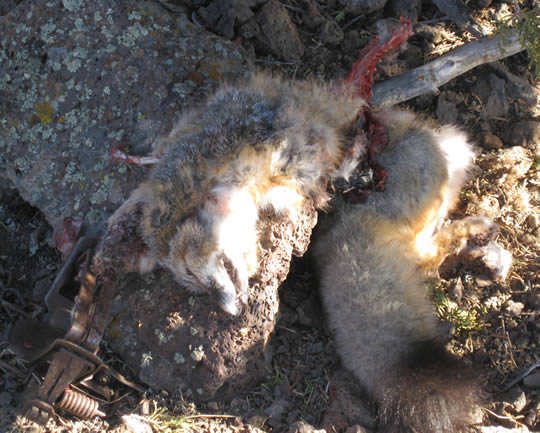
Trapped animals can not avoid predators. This trapped fox was torn apart while immobilized in a leg hold trap.
 Know Your NM State Legislators!
Know Your NM State Legislators!
Your New Mexico state Senator and Representative have the power to ban traps, snares and poisons on public lands. Find out who they are and let them know you oppose trapping on public lands. A simple phone call and email can make all the difference.
People's Forum Panel Report on Public Lands Trapping
The New Mexico Legislature should ban trapping on public lands in New Mexico because traps harm people, animal companions, and whole populations of wildlife including rare species. Most New Mexican voters believe that trapping is cruel and unnecessary.
TrapFree Friends
Animal Protection Voters
Black Bear Bureau
Footloose Montana
Fur Free Alliance
Furbearer Defenders
League of Humane Voters
Lobos of the Southwest
Mercy for Animals
National Urban Wildlife Coalition
No Cruel Traps on Public Lands
People's Forum Panel on New Mexico Public Lands Trapping
Predator Defense
Project Coyote
Pulling for Life
TrailSafe Nevada
Trap Free Montana
TrapFree Oregon
Wyoming Untrapped

